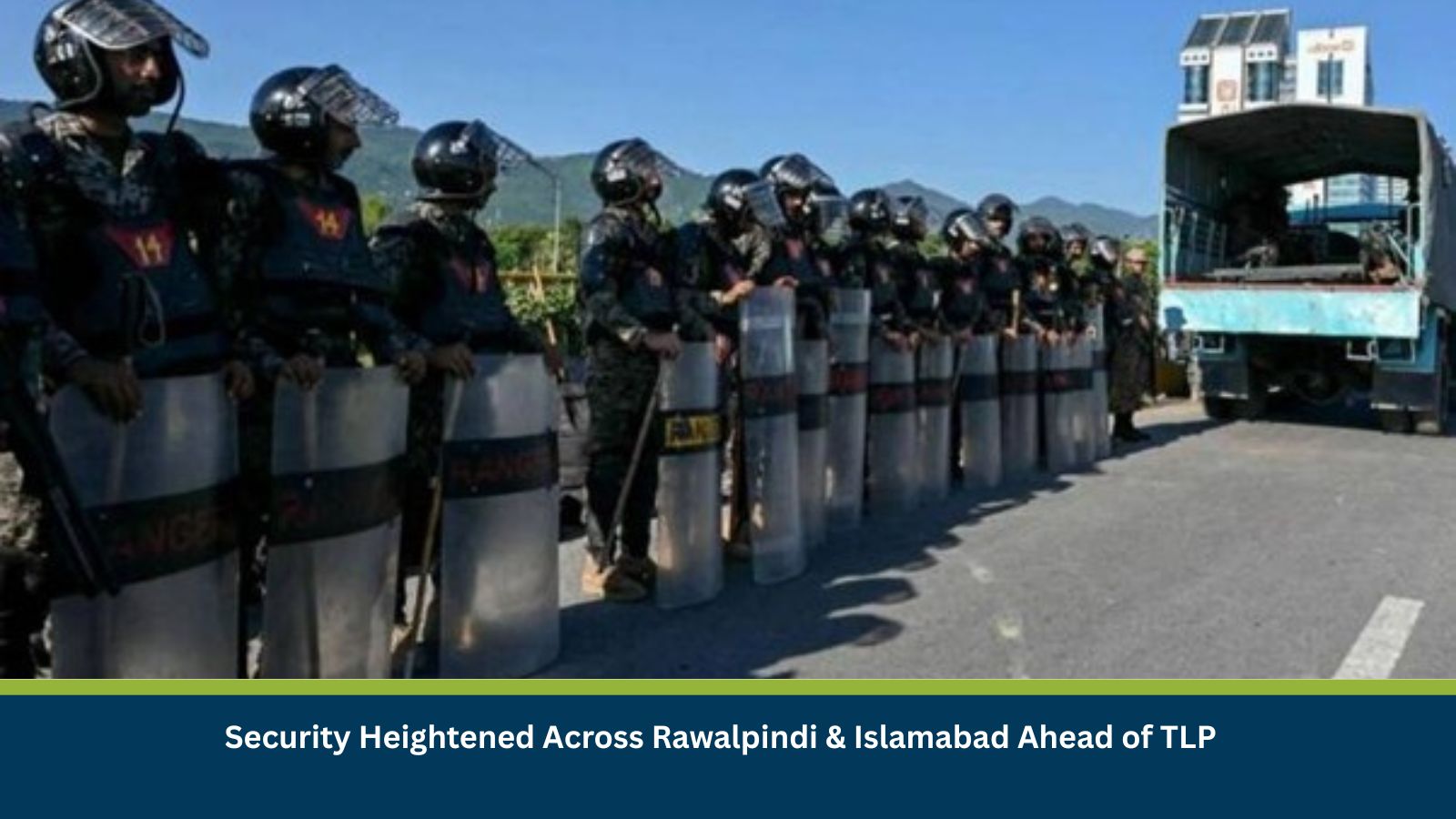What is Risk Analysis in the Context of Civil Disturbance Events
Civil disturbance risk analysis assesses how protests, marches, and sit-ins affect safety, mobility, and business continuity. In Pakistan’s twin cities, large religious-political mobilisations—such as TLP and prior PTI actions- recurrently trigger Section 144 orders, road closures, and communications controls. These patterns elevate operational risk across people safety, transport, supply chains, and digital resilience.
Executive Summary
- Date of Incident: 10 October 2025
- Location: Rawalpindi & Islamabad, Pakistan
- Risk Category: Civil Disturbance
- Severity Score: 4/5
- Confidence Level: 90%
Security is heightened ahead of TLP’s planned march, with police, Rangers and FC pre-positioned. Authorities may impose Section 144 and implement diversion plans. Based on previous TLP/PTI demonstrations, expect extensive roadblocks, suspended public transport, potential clashes, and targeted mobile internet restrictions. Disruption is likely for 24–72 hours, with residual effects for up to a week.
Current Updates
Security has been heightened across Rawalpindi and Islamabad in anticipation of Tehreek-e-Labbaik Pakistan (TLP)’s planned march on Friday, October 10, 2025. Authorities are deploying additional police and paramilitary forces, including Rangers and FC, to strategic locations and sensitive areas to manage potential unrest and maintain law and order. Section 144 (prohibiting public gatherings) may be imposed in key areas, and traffic diversion plans are being prepared.
Known Hotspots and Sensitive Areas
High impact: Faizabad Interchange, D-Chowk, Red Zone approaches (Parliament House, Supreme Court, PM Secretariat, Diplomatic Enclave), Murree Road corridors, Islamabad Expressway choke points.
Medium impact: Kashmir Highway, M-1/M-2 interchanges, Blue Area business district.
Low impact: Peripheral residential zones, unless protests disperse or sit-ins expand.
Impact on Transportation and Services
Major arteries are likely to be sealed, with gridlock across Rawalpindi–Islamabad. The Metro Bus is expected to suspend services; taxis and ride-hailing will be constrained. Staff access to offices, clinics, and retail spaces will be limited. Short, targeted mobile data shutdowns could disrupt customer support, payments, and remote coordination. Last-mile deliveries and time-sensitive movements will face delays and rerouting.
Recommended Actions
- Enforce work-from-home for non-essential staff; provide secured transport or local lodging for essential roles; issue geofenced no-go advisories for hotspots.
- Stagger shifts; pre-approve remote access; validate backups and power protection for critical IT; prepare offline workflows where mobile internet may be curtailed.
- Re-time or reroute shipments to avoid Faizabad/Red Zone corridors; position contingency stock; identify alternate carriers and micro-warehousing options.
- Harden perimeters near march routes; lock non-essential areas; elevate surveillance and incident logging.
- Push timed client/vendor notices on service adjustments; maintain multi-channel alerts (SMS, radio, landline trees, satphone for critical roles).
Multidimensional Impact
Road closures and security cordons may impede the Rawalpindi dengue response and Islamabad’s October polio drive, delaying field teams and public access. Investigations and routine services can be deprioritised as resources shift to crowd management. Short mobile internet suspensions, if applied, will amplify operational friction across payments, telehealth, and customer service.
Emergency Contacts
- Police: 15
- Fire: 16
- Rescue/EMS: 1122
- National Emergency: 15 / 1122 / 16
- Official Channels:
Final Thoughts
The trajectory indicates a high-impact yet time-bounded disruption lasting 24–72 hours, with a potential risk of sit-ins extending the overall impact. Key watchpoints include Faizabad containment, spillovers into Red Zone areas, targeted mobile data suspensions, and night-time blockades affecting movement and communication. Businesses should prioritise personnel safety, preserve continuity through flexible operations and offline contingencies, and maintain real-time monitoring using trusted alerting platforms and route intelligence tools to mitigate operational disruptions effectively. Stay ahead of operational risks with real-time alerts, scenario modeling, and expert advisories with datasurfr’s Predict. Start your 14-day free trial of Datasurfr’s Risk Intelligence Platform today.






